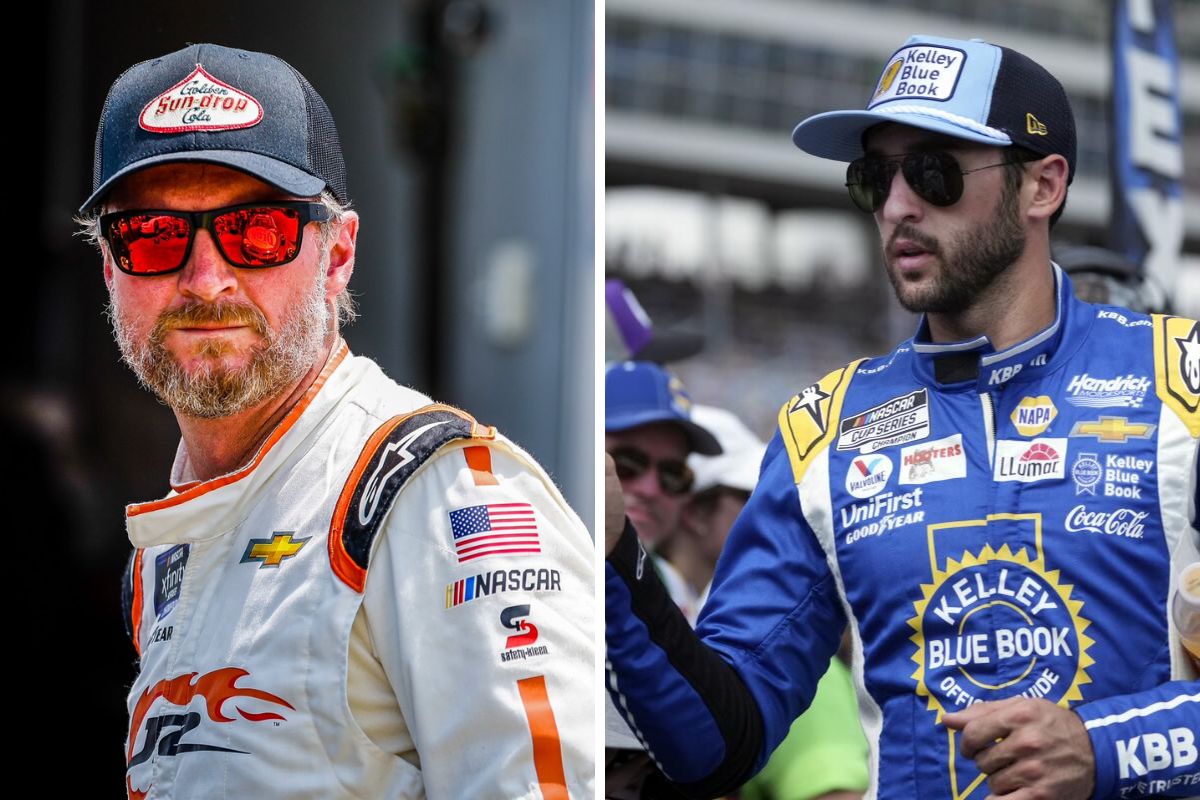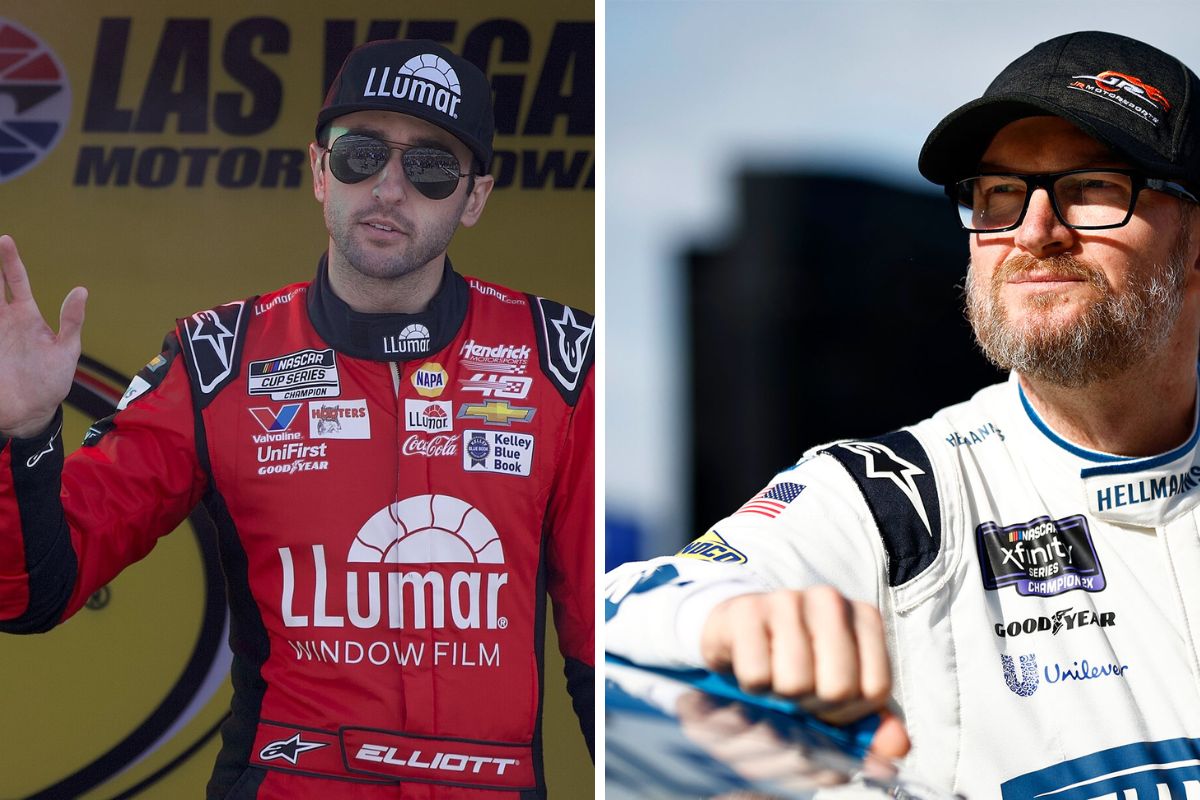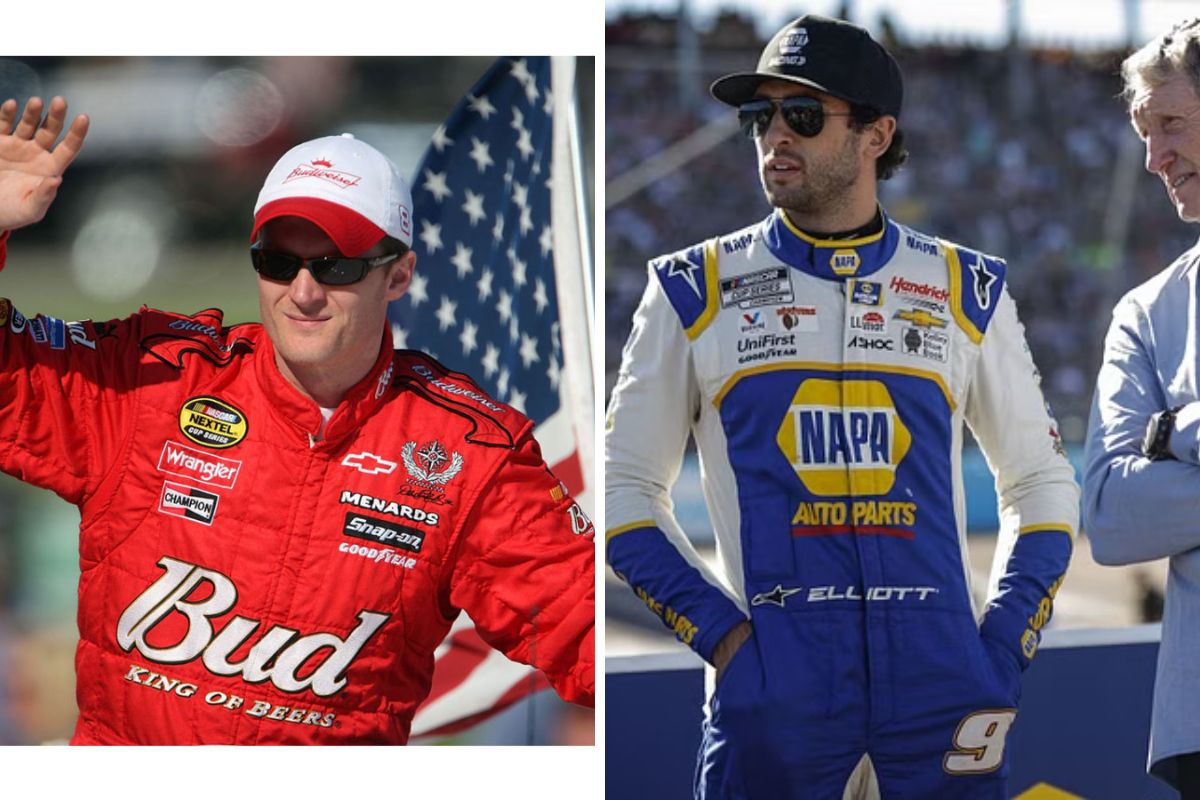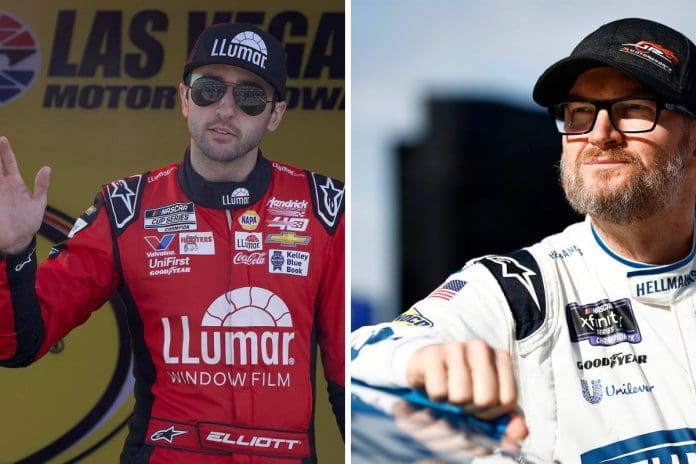Chase Elliott Rejects Dale Jr. 2.0 Label: In NASCAR, Chase Elliott‘s firm rejection of the ‘Dale Jr. 2.0’ label underscores a deeper narrative about personal and professional identity in sports. As the son of the legendary Bill Elliott, Chase faces the immense pressure of legacy and expectation. Yet, his deliberate efforts to distance himself from the shadow of Dale Earnhardt Jr. not only highlight his ambition to forge a distinct path but also raise intriguing questions about the dynamics of mentorship, influence, and individuality in racing.
Key Takeaways
- Chase Elliott aims to establish a unique legacy, distinct from Dale Earnhardt Jr.’s influence.
- Elliott focuses on strategic, long-term impacts in his racing career.
- Despite comparisons, Elliott seeks to demonstrate his own style and success in NASCAR.
- Elliott has already begun shaping his distinct path with multiple accolades.
- His rejection of the ‘Dale Jr. 2.0’ label underlines his desire for individual recognition in NASCAR.
The Legacy of Chase Elliott and Dale Earnhardt Jr.
The legacies of Chase Elliott and Dale Earnhardt Jr., both cherished figures in NASCAR, are marked by their immense popularity and substantial contributions to the sport. Dale Earnhardt Jr., son of NASCAR legend Dale Earnhardt Sr., carried not only his father’s legacy but also forged his own path in the racing world. His career-best 3rd place finish in the 2003 season with Dale Earnhardt, Inc. (DEI) set high standards and expectations early in his career. As a driver for Hendrick Motorsports, he continued to showcase his racing prowess until his retirement in 2017.
Chase Elliott, stepping into the significant void left by Earnhardt Jr., quickly rose to prominence driving the Hendrick #9. His ascendancy in NASCAR was not just fortuitous but a result of his relentless drive and racing acumen, which have firmly established him as a formidable competitor in his own right. Elliott’s seamless shift into a leadership role at Hendrick Motorsports underscores his capability and readiness to carry on the high standards set by his predecessors, including Earnhardt Jr.
The handover of popularity and leadership from Earnhardt Jr. to Elliott was symbolic of a generational shift within NASCAR. It represented not just a passing of the baton in terms of fan favorites but also highlighted Elliott’s readiness to step into larger roles within the racing community. Both drivers, through their respective eras, have significantly influenced the narrative and trajectory of NASCAR, leaving indelible marks on the sport that resonate with fans and fellow racers alike.

The Popularity Contest: Elliott vs. Earnhardt Jr.
While both Chase Elliott and Dale Earnhardt Jr. have solidified their statuses as fan favorites, comparing their levels of popularity reveals intriguing nuances and evolving fan dynamics within NASCAR. Dale Jr.’s record of 15 Most Popular Driver (MPD) awards is a testament to his enduring appeal and the deep emotional connection he fostered with fans over his career. His charisma, racing pedigree, and everyman persona resonated deeply with a broad audience, sustaining his popularity even beyond his active driving years.
Chase Elliott, on the other hand, represents a younger generation of NASCAR enthusiasts. With 6 MPD awards to his name by 2023, Elliott’s appeal is unmistakable yet distinct from Earnhardt’s. While inheriting some fans from his father, Bill Elliott, who hold his best at Talladega tri-oval track was also a celebrated driver and MPD award winner, Chase has carved out his own niche. His on-track success, including a championship win in 2020, demonstrates his competitive edge and aligns with a modern NASCAR fanbase that values both personality and performance.
The dynamics of their popularity not only reflect their individual attributes but also the shifting landscape of NASCAR’s audience. Earnhardt’s popularity was rooted in a legacy of racing history and a personal touch that felt familial to many fans. Elliott’s popularity, while influenced by his lineage, is also propelled by his prowess on the track and a personality that connects with today’s more diverse and dynamic viewer base.
Harvick’s Insights on Elliott vs. Earnhardt Jr.
Often, Kevin Harvick has shared his perspective on the contrasting appeals and racing styles of Chase Elliott and Dale Earnhardt Jr., noting key differences and similarities that define their respective eras in NASCAR. Harvick’s unique position, having competed alongside both drivers and against their familial predecessors, gives him a deeply nuanced view of the evolution within the sport and the shifting dynamics of driver popularity and performance.
Harvick observed that while Earnhardt Jr. carried the weight of his legendary father’s legacy, he brought a relatable everyman charisma that resonated deeply with NASCAR’s traditional fan base. Earnhardt’s style was aggressively charismatic, often pushing his car to the limits in a manner that endeared him to fans seeking nostalgia and heroism on the tracks. His tenure as NASCAR’s Most Popular Driver for 15 consecutive years is a reflection of his profound impact on the sport and its audience.
In contrast, Chase Elliott, emerging in an era defined by social media and a younger demographic, brings a different kind of appeal. His racing style, which Harvick notes as being more calculated and technically precise, aligns with the modern demands of the sport. Elliott’s popularity, underscored by his own string of Most Popular Driver awards, reflects a shift in NASCAR’s audience, which now gravitates towards a blend of legacy and innovation in performance.

Elliott’s Perspective on His Racing Career
Reflecting on his racing career, Chase Elliott acknowledges the significant impact his victories have on NASCAR’s broader community and its evolving fan base. In the nuanced landscape of motorsports, Elliott’s awareness of his influence mirrors the responsibilities shouldered by racing legends, yet he seeks to carve a distinct path, diverging from the shadows of historical figures like his father, Bill Elliott, and Dale Earnhardt Jr.
“Probably not. Probably not completely. I do understand a lot of it,” Elliott said, “You know, for me, I didn’t want to start racing to, you know, it wasn’t a popularity contest for me. I wanted to start racing and race because I wanted to be one of the best, you know, from a competitive standpoint.”
Elliott’s dialogue with Kevin Harvick during the ‘Harvick Happy Hour’ encapsulates his contemplative approach to his legacy and the broader implications of his achievements. When Harvick highlighted the parallel significance of victories by Elliott and Earnhardt Jr., it wasn’t just an observation about popularity but a confirmation of their pivotal roles in uplifting the sport’s profile during their respective eras.
“And I’ve always tried to stick with that mentality and stick with just knowing that being me is the best way for myself to have happiness and just do my part and continue to let the competitive aspect of racing drive me, because that’s what’s always driven me since I was a little kid. And I think if I ever lose sight of that, then I’ve got some bigger problems to address. And it’s always been competition for me. It’s always been the urge and the will to want to mix it up with people that I respect. And I put myself in that category.”- elliott
The Debate Continues: Harvick’s Take on Elliott vs. Earnhardt Jr.
Kevin Harvick’s perspective adds another layer to the ongoing debate regarding who is the superior driver: Chase Elliott or Dale Earnhardt Jr. Harvick’s insights are particularly valuable given his extensive experience and personal racing history with Dale Jr. During a recent episode of the Happy Hour, Harvick expressed a slight preference for Dale Jr., citing his diverse experience in different cars and his significant contributions to the sport. Harvick emphasized that while both drivers are exceptional, his personal experiences and the historical impact of Dale Jr. sway his opinion slightly in favor of the NASCAR legend.
“For me, I grew up racing with Dale. I think that Dale Jr. had, you know, he had a lot of, he had a lot of different experience in different cars. I would go with, I would personally go with Dale Jr. on that side of the fence.”- Harvick
Despite Harvick’s leanings, the broader consensus among some current NASCAR drivers, including the Joe Gibbs Racing team, seems to favor Elliott, largely due to his championship win. Martin Truex Jr., in particular, highlighted Elliott’s achievement as a defining factor, suggesting that such accolades carry substantial weight in evaluating a driver’s career.
Harvick also acknowledges the greatness of Chase Elliott, pointing out that comparisons should take into account the unique pressures and challenges each driver faces. His balanced view underscores the complexity of directly comparing two drivers from different eras and contexts within NASCAR.
“People need to understand the magnitude of what they deal with, and how those things go… Both great drivers. I’m a little biased towards Dale Jr… and what he’s done for the sport, but that doesn’t mean that Chase Elliott’s not great as well.”- harvick

News in Brief: Chase Elliott Rejects Dale Jr. 2.0 Label
Chase Elliott’s deliberate distancing from the ‘Dale Jr. 2.0’ label underscores a strategic pursuit of individual legacy within NASCAR. This effort not only differentiates Elliott from predecessors but also reinforces his commitment to crafting a unique narrative in the sport.
Such a stance invites further scrutiny and comparison, yet it fundamentally shifts the discourse toward evaluating Elliott on his terms, potentially redefining perceptions of success and influence in the racing world.
Also Read: Chase Elliott and Dale Jr’s NASCAR Burden Exposed by Kevin Harvick


